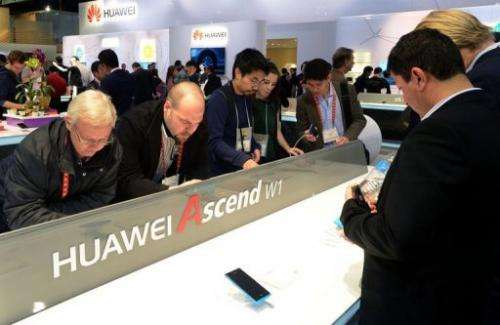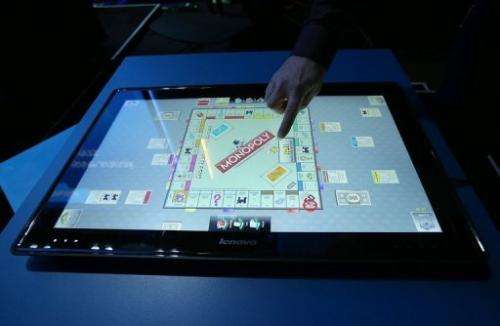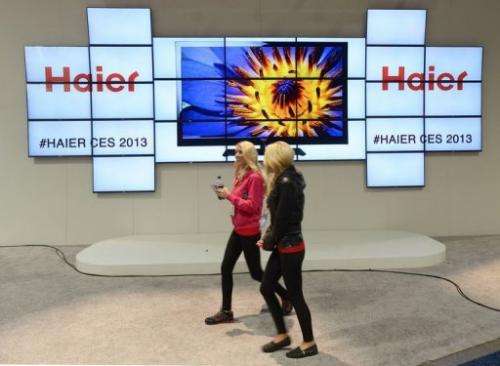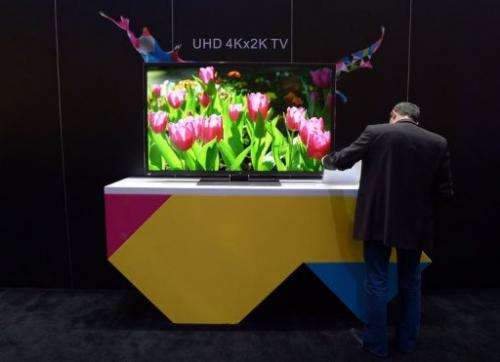Chinese tech firms pump up volume at CES

Chinese high-tech companies have showcased some of the most eye-popping gear at the Consumer Electronics Show in Las Vegas this week, bidding to reverse their lack of global brand recognition.
Experts say the established firms Lenovo and Huawei are moving more upscale, while Hisense and Haier, relative Chinese newcomers to the US market, have rolled out some of the biggest and most advanced TVs and slimmest smartphones.
"One of the things that strikes you (at CES) is the presence of the Chinese brands," said Bob O'Donnell, an analyst with the research firm IDC.
In the TV market, currently led by South Korean and Japanese firms, O'Donnell said, "We think the Chinese are ready to take on the Japanese."
Hisense made a splash in Vegas by taking over a prominent spot formerly occupied by Microsoft, drawing crowds with dance performances, a 110-inch TV touted as the world's biggest, and others that use "ultra HD" or 3D technology.
"Hisense is number one in China for more than nine years, but the US is the most important market... if we want to be a global brand," Rocky Yang, research director for Hisense in the United States, told AFP.
One of the ways the company is seeking to adapt to America is with its research center in Georgia, which Yang said showed Hisense is "not a third-tier company... we are technology driven."

Haier, meanwhile, at CES unveiled a lineup of smart TVs, which have gesture control and face recognition features, alongside some of the home appliances that the company is better known for.
TCL, a major China-based TV maker which has previously manufactured using the RCA and Thomson brands, unveiled its "Blade TV," one of the thinnest on the market.
The company also showed off its smart TV that recognizes who is watching—allowing it to suggest potential programs.
In the smartphone race, Chinese makers have also displayed several powerful and slim devices, though few are yet available in the United States.

"They've been ready for the US market for some time," said Ramon Llamas, also an analyst at IDC. "The problem is brand awareness, brand acceptance. It's easy to get washed away by something like Samsung and its Galaxy 3S."
But it's only a matter of time before the Chinese firms grab a bigger share of the US mobile device market.
"Keep an eye on Huawei," he said. "Some of those devices are very robust. And ZTE has said publicly that the US market is a priority for them."
ZTE's Grand S smartphone was honored with the 2013 iF International Design Award at the show.
"The ZTE Grand S not only boasts style, but it breaks records with the world's thinnest touch screen," the iF International Design organization said.
The Android-powered phone includes face recognition, anti-shake and a panoramic camera.
At CES, Huawei unveiled its new Ascend Mate—claimed to have the world's biggest screen for such a device, a 6.1 inch display—as well as an Intel processor and improved battery life.
The company also showed its new flagship Ascend D2, touting its power-saving and easy sharing capacity.

The devices are set to be released in China, with the D2 slated for Japan later. But Huawei is also edging into the US and other markets where the high end is dominated by Apple's iPhone and Samsung's top line smartphones.
Huawei and ZTE, which are known for telecom infrastructure, are moving more into the consumer market, which could boost their awareness at a time when they are being scrutinized in Washington for ties to the Chinese government.
Lenovo at CES unveiled a new line of smartphones "from entry-level and young professionals to advanced users," to be made available in China "and select global markets."
The company also showed an array of computer products ranging from a large tabletop model for multiperson use, and twisting "ultrabooks" which compete in the portable segment.
(c) 2013 AFP




















